Modern research also has unlocked many new applications.
Many potent phytochemicals (chemical compounds occurring naturally in plants) have been identified
and are used
as such in treatments.
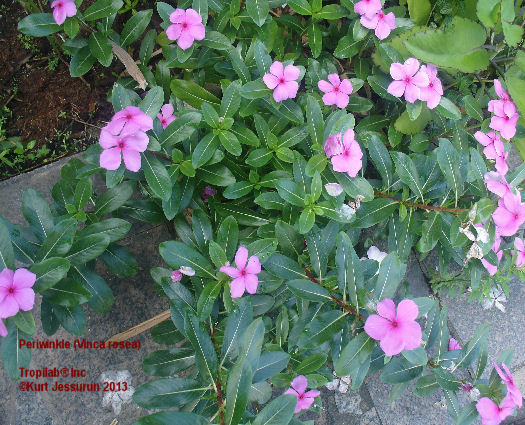 For instance, this can be seen in the use of the Rosy Periwinkle (Vinca rosea) from Madagascar
against childhood
leukemia (the most common type of cancer in children and teens).
For instance, this can be seen in the use of the Rosy Periwinkle (Vinca rosea) from Madagascar
against childhood
leukemia (the most common type of cancer in children and teens).
 Also the use of Taxol (Paclitaxel), derived from the bark from Pacific Yew tree (Taxus brevifolia) against several
types
of cancer.
Also the use of Taxol (Paclitaxel), derived from the bark from Pacific Yew tree (Taxus brevifolia) against several
types
of cancer.
There are many more examples of the use of botanicals in modern medicine such as an enzyme from the Papaya (Carica papaya) that
helps to shrink or dissolve ruptured disks in the spine.
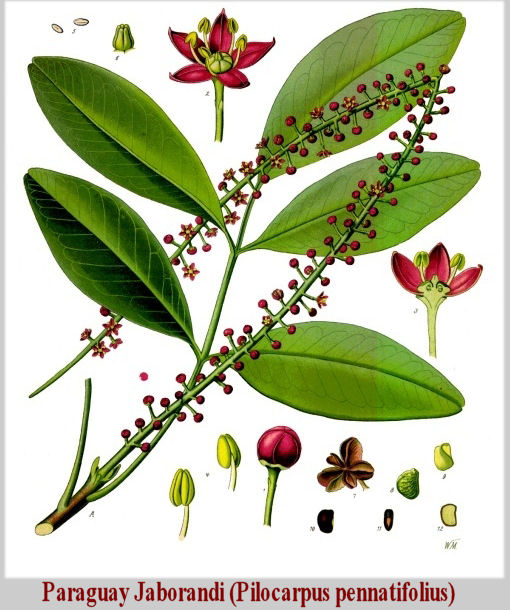
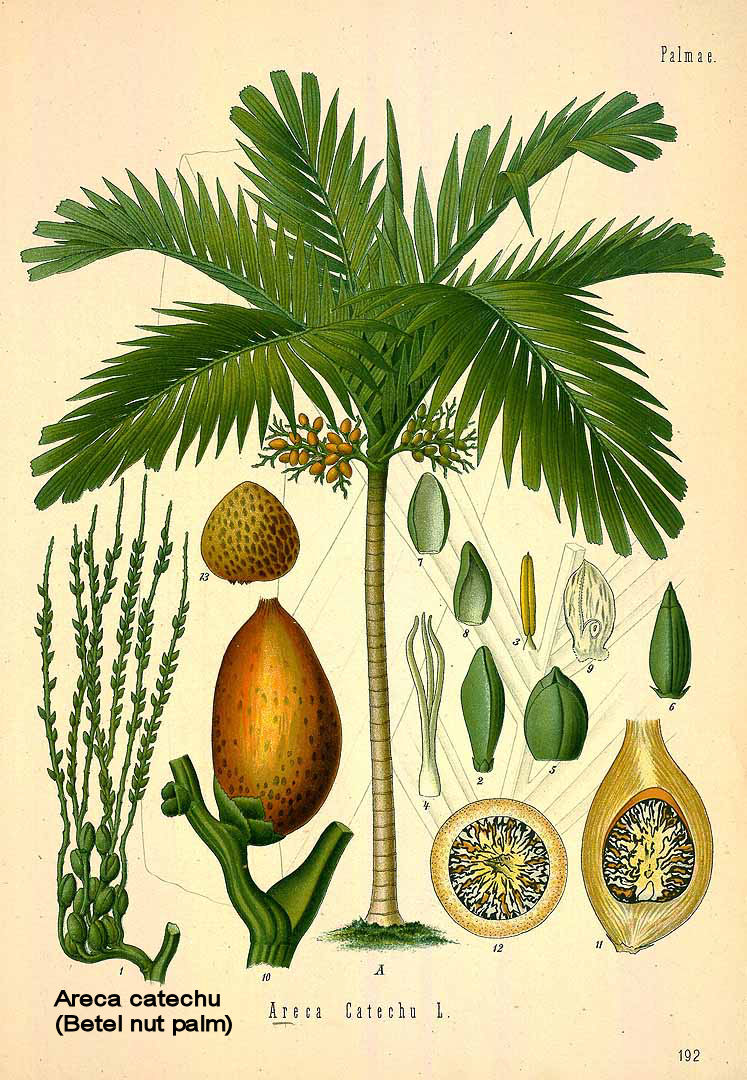
Pilocarpine (from the Pilocarpus shrub in the Amazon rainforest) and Arecoline from the
Betelnut (Areca
catechu) to treat glaucoma.
Capsaicin from Cayenne pepper (Capsicum fruticosum), to treat the pain of arthritis, shingles
and nerves.
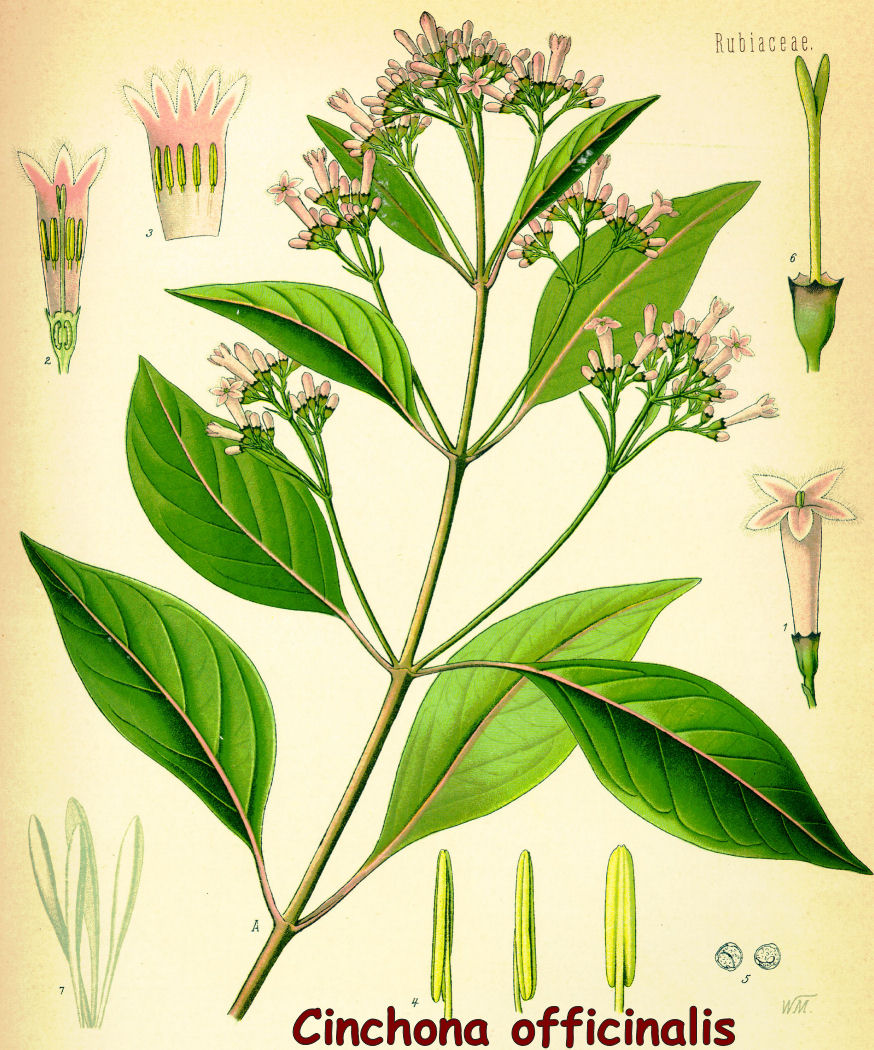 Quinine, used as a cure for malaria, is extracted from the bark of the cinchona tree.
Quinine, used as a cure for malaria, is extracted from the bark of the cinchona tree.
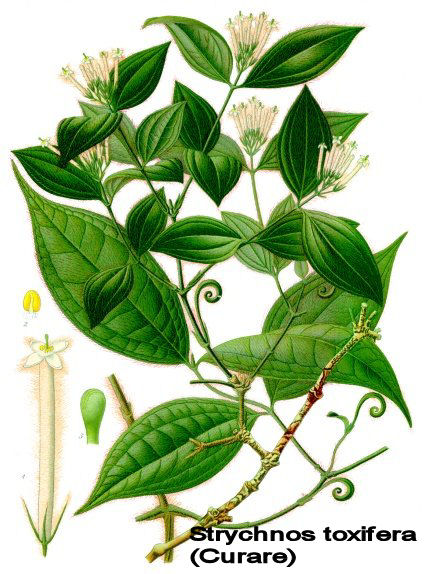 Curare (from which d-turbocuarine is isolated) and that is used as a general anesthesia and to
treat muscular disorders.
Curare (from which d-turbocuarine is isolated) and that is used as a general anesthesia and to
treat muscular disorders.
The cancer treatment drug Topotecan is extracted from Camptotheca (Happy tree).
Coumadin from the seeds of the Tonka tree (Dipteryx odorata,) an Amazonian rainforest tree, that is used as a blood thinner.
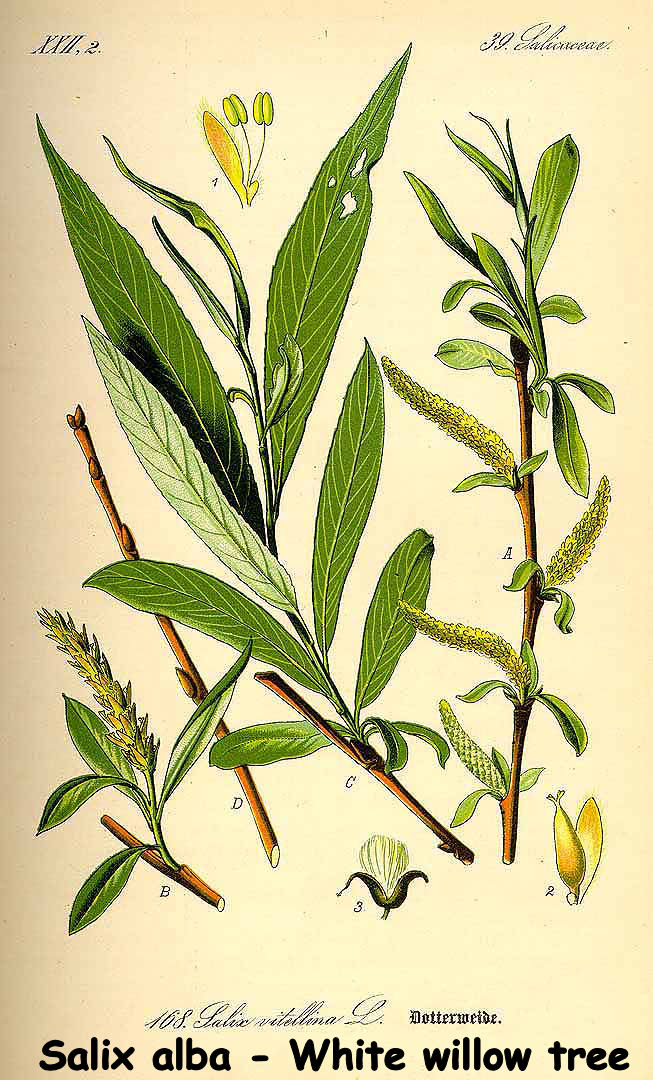 Aspirin (acetylsalicylic acid) used against fever, pain, rheumatic fever, and inflammatory diseases. It also has an antiplatelet
effect; decreases the ability of blood clots to form. The active ingredient was first discovered from the bark of the willow tree (Salix)
in 1763. The origin of aspirin is somewhere between 460 BC - 377 BC, when Hippocrates, the famous Greek doctor, prescribed chewing
on the bark of the willow tree to reduce fever and pain.
Aspirin (acetylsalicylic acid) used against fever, pain, rheumatic fever, and inflammatory diseases. It also has an antiplatelet
effect; decreases the ability of blood clots to form. The active ingredient was first discovered from the bark of the willow tree (Salix)
in 1763. The origin of aspirin is somewhere between 460 BC - 377 BC, when Hippocrates, the famous Greek doctor, prescribed chewing
on the bark of the willow tree to reduce fever and pain.
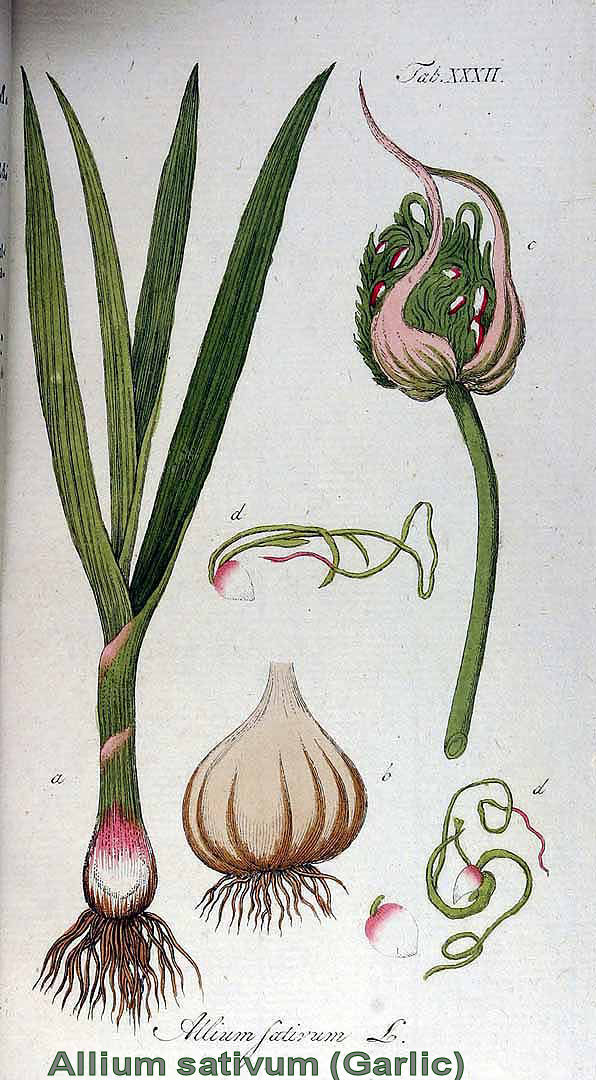
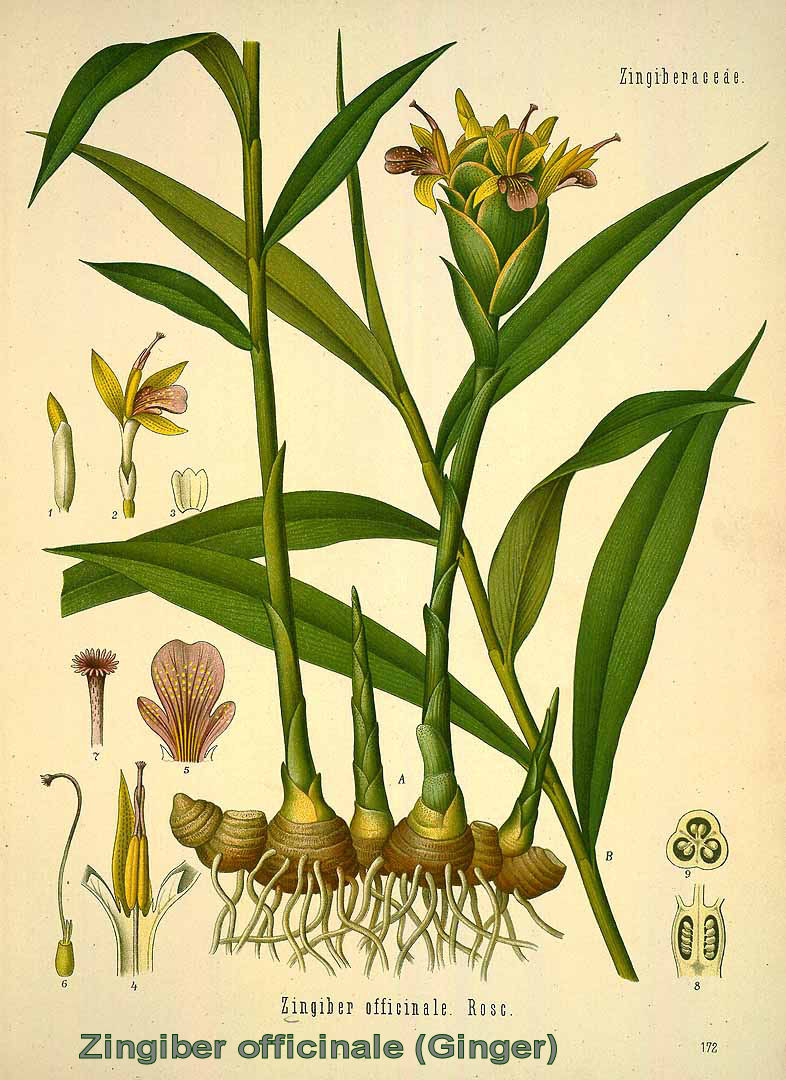 Also the “humble” Garlic and the closely related Onion and Ginger have many interesting and very useful
medicinal properties, as we will see later on.
Also the “humble” Garlic and the closely related Onion and Ginger have many interesting and very useful
medicinal properties, as we will see later on.
The list can go on and on but still too many plants, herbs, mosses and fungi are not utilized in mainstream
medicine for a number of
reasons.
Using plants and herbs in the treatment of diseases and illnesses is almost universal among emerging
markets and Third
World countries. They often are more affordable than buying expensive pharmaceuticals
(refined or synthesized drugs).
Unfortunately, the trend is moving away from natural substances and more to rely heavily on synthetic drugs.
A few of the reasons why this is occurring may be due to the following:
In general, pharmaceutical firms are not willing to invest hundreds of millions of dollars in research
for plants it
may have difficulty to obtain and of which the content may be medically ineffective.
Many traditional medicinal preparations are not of interest to the pharmaceutical industry since they
generally cannot
be patented.
It is sometimes difficult to obtain enough raw materials to produce the drugs.
The most important reason though why relatively few plant based medicines have been utilized in main
stream medicine in
the last 100 years, is the fact that patenting plant compounds is very difficult to
do.
However, for a few decades now, there has been renewed (although not general) interest in reusing medicinal
plants in
western medicine. Some of the reasons can be; the need for alternative treatments for drug-
resistant pathogens and the
existence of ailments without an effective pharmaceutical treatment.
|


